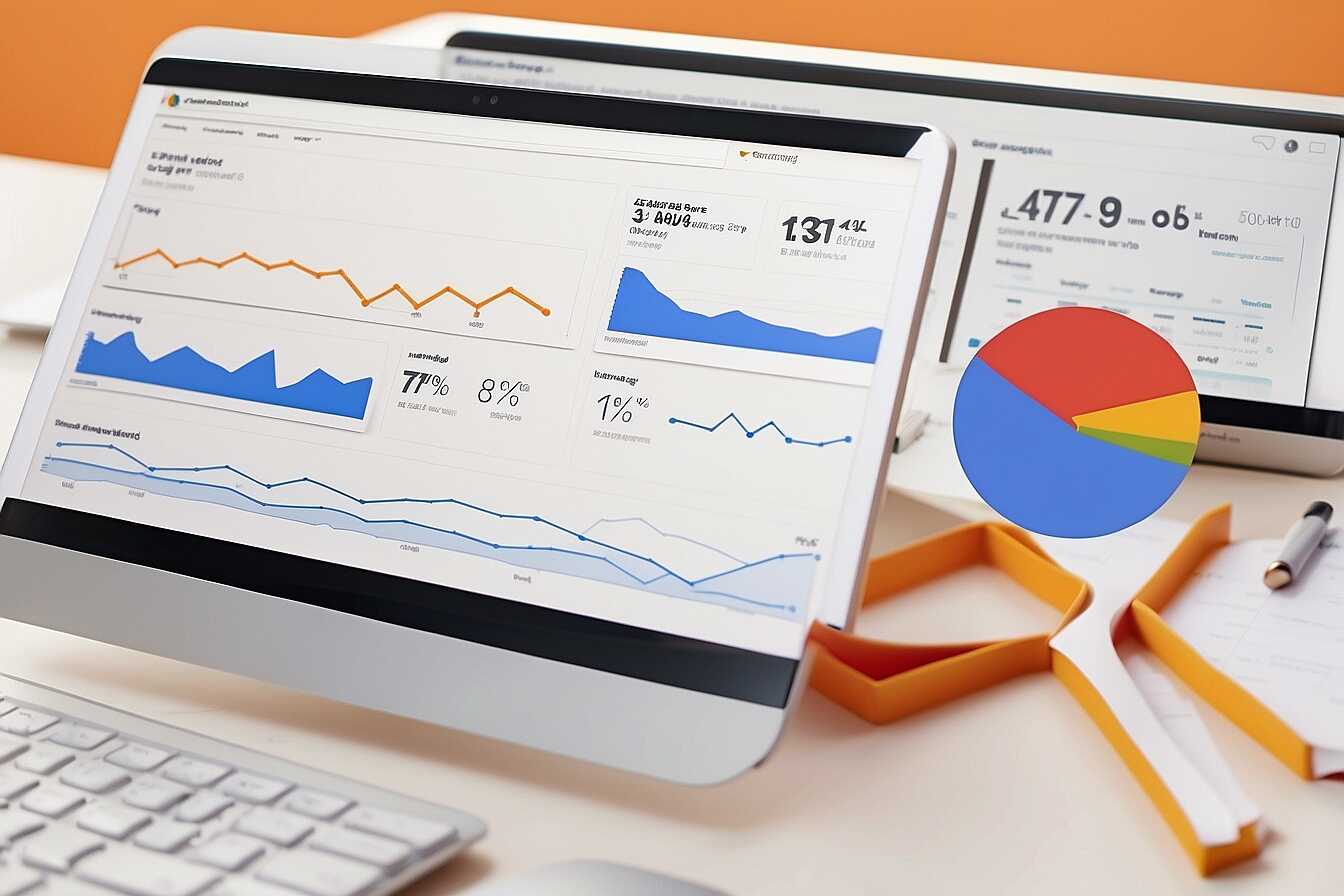Updating old pages is crucial for SEO performance as it significantly enhances a website’s visibility and relevance. Regularly refreshing your content helps maintain and improve rankings, ensuring that your site remains competitive in search engine results. At Metrics Rule, we understand the importance of this practice in the ever-evolving landscape of digital marketing. By re-evaluating and updating existing content, website owners can not only boost their SEO performance but also engage their audience more effectively.
Understanding the Significance of Content Freshness for SEO
Content freshness plays a vital role in SEO as search engines prioritize updated and relevant information. By regularly refreshing old content, websites can significantly improve their reliability in users’ eyes and gain better search rankings on platforms like Google and Bing. Search engines reward websites that provide current and accurate information, ensuring efficient crawling and indexing. In general, websites should aim to update their content at least every six months to enhance their performance and visibility in search results.
Key Factors Influencing Search Engine Rankings for Fresh Content
Several key factors determine how search engines rank updated pages. First, relevance matters; content should address the latest trends or industry developments. Second, user engagement can indicate quality; metrics such as time on page and bounce rate play a crucial role. Third, backlinks to updated content suggest authority and relevance, enhancing both user trust and SEO. Implementing these strategies ensures that your content remains competitive, ultimately helping you achieve excellent results in search performance.
Key Advantages of Keeping Website Content Current
Regularly updating website content provides several key benefits. It enhances user engagement by ensuring information is accurate and relevant. When users find current and useful content, they are more likely to spend time on your site, leading to lower bounce rates and improved dwell time. For optimal SEO, consider updating blog posts, landing pages, and product descriptions. Frequent updates signal to search engines that your site is active, which can lead to better crawling and indexing. Ideally, aim to refresh your content every 3-6 months to observe noticeable improvements in rankings and user interaction.
Types of Content That Require Regular Updates
Several types of content benefit significantly from periodic updates. Blog articles that address current trends or provide timely information are prime candidates. Additionally, product pages that display new features or updated pricing should be revisited frequently. Updating landing pages to reflect seasonal promotions or new services can also improve user engagement and SEO performance. Consider revising case studies, whitepapers, and FAQ sections to incorporate fresh data or insights. Each update provides an opportunity to include targeted keywords, enhancing visibility in search engine results and driving organic traffic to your site.

How Search Engines Measure Content Timeliness
Search engines like Google and Bing utilize specific algorithms to assess content freshness. The primary criteria include factors such as publication date, frequency of updates, and user engagement. Pages that are regularly updated are often ranked higher than static pages. Moreover, user interaction metrics, like time spent on a page and bounce rates, significantly influence SEO rankings. Content that shows higher user engagement is often perceived as more relevant and fresh by search engines. Overall, ensuring your website content is current can lead to better visibility and higher rankings in search engine results.
Key Factors Influencing Content Freshness for SEO
Several key factors influence how content freshness impacts SEO rankings. The publication date is crucial; content published recently often ranks better than older material. Updates, when made frequently, signal to search engines that a site is actively maintained, thus enhancing its credibility. User engagement metrics play a pivotal role; higher engagement rates indicate valuable content, prompting search engines to improve rankings. For example, content that receives comments or shares not only gains visibility but is also seen as essential by search engines. Regularly updating old pages improves overall site performance, reliability, and search rankings, leading to greater success in your digital marketing efforts.
Impactful Statistics on Content Revamping
- Updating old pages can boost organic traffic by up to 200%.
- Search engines prefer fresh content, which can lead to better rankings.
- 43% of users won’t return to outdated content.
- More than 70% of SEO professionals report increased performance after updates.
- Content over 3 years old gets 90% less traffic than newly updated content.
- Google rewards sites that consistently improve their pages with higher visibility.
- Revisiting outdated posts can increase backlinks by 30%.

Effective Strategies for Updating Old Web Pages
Identifying outdated content on your website can be accomplished through various methods such as analyzing traffic metrics, user engagement rates, and outdated keywords. Regular audits can pinpoint pages that have seen decreased performance. Optimizing these pages should include refining title tags, improving keyword density, and enhancing user experience through updated visuals and structure. To maintain effective SEO performance, it’s recommended to update old website pages at least every few months. This ensures that content remains relevant and can handle evolving search engine algorithms.
Strategies for Keyword Analysis During Updates
When updating old web pages, conducting a thorough keyword analysis is essential. Utilize tools that track keyword performance and focus on emerging trends in search behavior. Identify keywords that enhance content relevance and adjust your headings, meta descriptions, and in-page copy accordingly. Incorporating long-tail keywords can draw in more targeted traffic while providing clearer context. This practice not only helps boost SEO but also ensures your content aligns with what users actively seek. By applying strategic keyword analysis techniques, you can significantly improve search rankings and user engagement.

Essential Tools to Analyze Content Performance Over Time
To measure content performance effectively, focus on metrics such as page views, time on page, bounce rate, and conversions. Tools like Google Analytics and SEMrush are essential for tracking these metrics. They help pinpoint which pages require updates and why, ensuring your website maintains relevance. For comprehensive insights, regularly review content performance data to enhance your SEO strategy. Additionally, A/B testing can reveal which updates make a significant impact, offering proven results that improve content efficiency.
Comparing Popular Analytics Tools for Content Updates
When comparing analytics tools for improving content updates, Google Analytics is a reliable choice. It provides insights into user behavior, including which pages attract the most traffic. SEMrush, on the other hand, can handle keyword analysis and competitive research effectively. Both tools offer unique features that enhance content analysis. Using them together helps ensure comprehensive coverage and informs decisions on content revisions. As analytics tools evolve, adopting the best ones by 2025 can significantly enhance your digital marketing approach.
Key Advantages of Refreshing Web Content
- Enhanced search engine rankings improve visibility and traffic.
- Keeping content relevant increases user engagement and retention.
- Updating content can help address gaps identified through content gap analysis.
- Fresh content is more likely to get shared across social media platforms.
- Improved content keeps the brand authoritative and knowledgeable in its field.
- High-quality updates often lead to increased conversion rates.
- Regularly refreshing content cultivates trust with your audience.

Common Pitfalls to Avoid When Updating Content
Website owners often make key mistakes when updating content. Common pitfalls include neglecting to review existing metadata, which is essential for SEO. Failing to analyze keyword performance can lead to updates that are not optimized—using tools like Google Analytics can provide valuable insights. Another frequent error is not ensuring that the refreshed content aligns with current SEO best practices, which can detract from overall website relevance. Additionally, many underestimate the importance of internal links, which help in crawling and indexing. Lastly, neglecting to monitor how updated content performs can hinder its success, making continual evaluation essential.
Importance of Monitoring Content Performance After Updates
Monitoring content performance after updates is crucial for optimizing SEO. Regularly reviewing analytics allows website owners to assess how the changes impact ranking and traffic. By utilizing tools like Google Analytics, you can pinpoint which updates resulted in increased engagement or conversions. This ongoing evaluation helps identify patterns and effectiveness, ensuring that your SEO strategy remains aligned with current trends and search behaviors. Adaptive strategies enhance overall website performance and contribute to sustained relevance in search results.
Examples of Successful Content Refreshing Initiatives
Several notable websites have achieved remarkable SEO improvements through effective content updates. For instance, HubSpot revitalized an older blog post on email marketing, enhancing its relevance with current statistics and best practices. This refresh led to a traffic increase of over 300% within six months. Another example is Wikipedia, which consistently updates its content based on ongoing events and reliable sources. This strategy ensures its pages remain authoritative and rank well in search results. By employing these techniques, both sites have enhanced their SEO performance and maintained their relevance in rapidly changing fields.
Strategies for Effective Content Refreshing
To ensure that content updates are effective, websites should focus on several essential strategies. First, conducting a content gap analysis helps identify outdated information that needs refreshing. Adding recent data, improving keyword density, and reworking meta tags boosts visibility. Using tools like Google Analytics provides insights into how content performs, enabling targeted updates. For instance, research shows that updating content every six months can significantly enhance search rankings. Engaging visuals and strong internal linking also improve user experience and dwell time. Combining these strategies can lead to a measurable increase in organic traffic and establish a website’s authority in its niche.
Related Brands and Their Positioning
- HubSpot – Offers inbound marketing software with valuable content updates; however, it may overwhelm new users.
- SEMrush – Provides SEO tools with constant updates and data insights but can be pricey for small businesses.
- Google – Regularly updates its algorithms that impact content visibility, making it essential for continual assessment.
- Ahrefs – Well-known for its backlink analysis and competitive analysis tools; yet, its learning curve can be steep.
- Yoast SEO – A trusted WordPress plugin to optimize content but requires ongoing attention to settings.
- Content Marketing Institute – Offers research and best practices; however, their focus is mostly on B2B audiences.
- Buffer – Excellent for social media sharing updates but might not address deep SEO issues.
Upcoming Trends in SEO Related to Content Freshness
Emerging trends show that content freshness in SEO is evolving continuously. New algorithms from search engines like Google and Bing focus on how recently your content was updated. The rise of AI tools also enables marketers to analyze customer needs better, allowing them to create more relevant and up-to-date content. ~The emphasis on content freshness increased by over 30% in the last five years, as evidenced by the latest industry reviews. Ensuring your website is updated can enhance its reliability and SEO performance significantly.
How AI Tools Are Shaping Content Freshness
AI tools are essential for shaping strategies around content freshness. These technologies analyze user behavior and preferences, enabling website owners to tailor their content to the latest trends. Tools like Google Analytics and various AI-driven SEO platforms help you identify outdated content that needs refreshing. The efficiency of these tools allows for quick revisions, ensuring that your content remains reliable and relevant in the evolving SEO landscape. As a result, businesses can enhance user engagement and improve their standing in search engine results rapidly.
